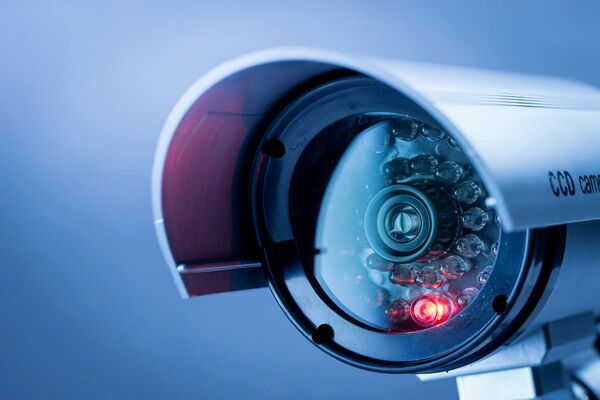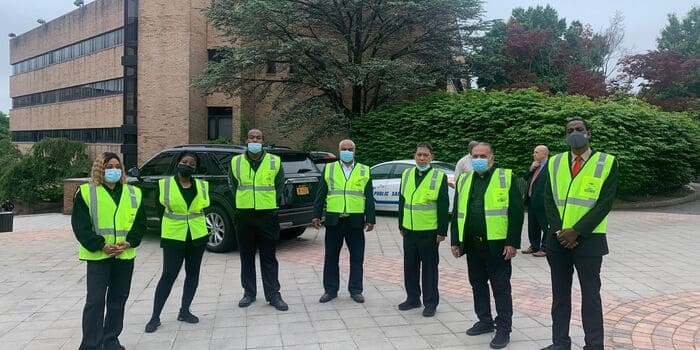We all crave safety—whether it’s at home, at work, or while attending a crowded event. In an age where threats can come from anywhere and at any time, beefing up your security is no longer optional—it’s essential. With rising crime rates, vandalism, and organized theft, people are actively investing in measures to protect their assets and loved ones. But here’s the catch—what’s the best way to do it? Would you trust your security to an army of motionless cameras silently surveilling every step? Or would more be gained from a group of alert security personnel patrolling the grounds?
This post gets in-depth about the age-old debate of security cameras versus on-site guards. We’ll take you through the pros and cons of each, what their ideal uses are, and assist you in determining which is better suited to your security demands—or if the true answer is merging both for an improved configuration.
Understanding Security Cameras

Remember those grainy, black-and-white CCTV clips that once dominated the evening news? They feel positively prehistoric now. Today’s cameras—rolled out and managed by top NYC Security Companies—offer crystal-sharp imaging, facial recognition, night vision, motion alerts, and automatic cloud backups. From bustling intersections and sleek office lobbies to the front porch that lets you see whether the dog has sneaked onto the couch, these smart eyes have woven themselves into the fabric of everyday life, delivering peace of mind that’s both high-tech and reassuringly human.
At its core, a security camera is a device designed to record footage for surveillance and monitoring purposes. Modern systems can stream real-time video to your smartphone, alert you of suspicious activity, and even communicate with intruders via two-way audio. There are several types of security cameras:
- CCTV (Closed-Circuit Television): Mostly used in commercial spaces, known for continuous monitoring.
- IP Cameras: Offer high-definition recording and remote access via the internet.
- Wireless Cameras: Easy to install, perfect for homes or small offices.
- Doorbell Cameras: Popular among homeowners for front door surveillance.
As the technology has improved, the adoption rate of these systems has skyrocketed, particularly due to their affordability, low maintenance, and ability to store and retrieve footage easily.
Key Benefits of Security Cameras
So, why are businesses and homeowners flocking toward camera systems? Let’s break down the key advantages that make them such a compelling security solution.
- 24/7 Surveillance with Remote Access:
Modern security cameras don’t just record—they monitor continuously, some even in complete darkness. You can check in on your property anytime, anywhere via a smartphone or desktop app. This is a massive boon for travelers or business owners who can’t be on-site all the time. - Concrete Evidence for Legal and Insurance Claims:
When something goes wrong—be it theft, vandalism, or an accident—having video evidence can make all the difference. It can help police track down perpetrators and is often crucial in legal battles or insurance claims. - Cost-Efficiency in the Long Run:
While initial setup costs can be high (especially for top-tier systems), maintenance is relatively cheap. You don’t need to pay a monthly salary or benefits as you would for security personnel. For small businesses and homeowners, this can be a major budget-saver. - Deterrent Effect:
Just the presence of a camera can make criminals think twice. Studies show that visible surveillance reduces the likelihood of theft and break-ins. - Versatility and Scalability:
From a single doorbell cam to a full-blown, multi-angle surveillance system, you can scale your setup as needed. Plus, many systems integrate with other smart home devices for a seamless experience.
Despite these perks, it’s not all sunshine and rainbows. Let’s talk about where cameras might fall short.
Limitations of Security Cameras
Security cameras have earned their reputation, but they’re not a silver bullet. Here’s where they stumble—and why relying solely on them might leave you exposed.
- No Real-Time Human Intervention:
Cameras can record crime, but they can’t physically intervene. By the time authorities are alerted and dispatched, the damage may already be done. This delay can be costly, especially during violent crimes or fast-moving thefts. - Susceptible to Hacking and Tampering:
Any system connected to the internet is vulnerable to cyber threats. Hackers can disable your system, access sensitive footage, or even use it to spy on you. Without regular updates and strong cybersecurity, your camera system can become a liability. - Blind Spots and Technical Failures:
No matter how many cameras you install, blind spots can exist. Weather, poor lighting, or camera angle limitations can hinder visibility. Also, technical glitches or power outages can render your system useless when you need it most. - Privacy Concerns:
Over-surveillance, especially in shared spaces, can lead to legal issues and discomfort among employees or tenants. It’s a delicate balance between security and privacy. - High Initial Setup for Advanced Systems:
While basic setups are affordable, full-featured systems with advanced analytics, cloud storage, and high-res feeds can get expensive quickly, especially for larger properties.
These limitations set the stage for the case for on-site security guards—real people with real judgment and immediate response capabilities.
Understanding On-Site Security Guards

When it comes to real-time, physical security, on-site guards are one of the first things that come to mind. While cameras watch passively, security guards actively protect. They are trained personnel—sometimes armed—who guard territories, watch over security systems, and respond immediately in cases of emergencies. Their presence alone can be an enormous deterrent against potential threats. But who are these professionals, and what do they have to offer?
Security guards differ in terms of training, responsibilities, and deployment. The most prevalent ones are:
- Unarmed Security Guards: Best suited for low-risk areas such as residential estates or shops. They conduct routine patrols, customer service, and report suspicious activities.
- Armed Security Guard: Equipped with training to handle firearms, these guards are best positioned for high-risk areas such as banks, VIP events, or cash transport.
- Mobile Patrol Guards: Work on foot and patrol wider areas such as construction sites or warehouses, providing rapid mobility and response.
- Event Security Guard: Trained for crowd management, ticket checks, and emergency response in case of public events.
Their duties are not only to stand at post. They may be assigned a host of duties—ID checks, CCTV monitoring, alarm response, incident report writing, and even serving as first responders in the case of medical emergencies. When well integrated into a security plan, guards provide a proactive and responsive level of security.
Key Benefits of On-Site Guards
There’s a reason why even the most tech-savvy companies still employ human security guards. Let’s explore why having a real person on the ground can sometimes outclass even the most sophisticated surveillance systems.
- Immediate Threat Response:
When something goes down, time is everything. Unlike cameras that can only record an incident, guards can step in right away. Whether it’s stopping a shoplifter, guiding people to safety during a fire, or de-escalating a conflict, their ability to act in the moment is invaluable. - Human Intelligence and Adaptability:
Machines follow programming. People think critically. A security guard can assess suspicious behavior, make quick decisions under pressure, and adapt to changing situations—things a camera system simply can’t do. - Strong Visual Deterrent:
The physical presence of a uniformed guard sends a strong message: this place is protected. It’s not just about catching criminals in the act—it’s about preventing them from trying in the first place. - Multi-Role Capability:
Guards are more than security personnel. They tend to act as greeters, direct visitors, or aid in the evacuation in case of emergencies. They are therefore particularly useful in public places, offices, and big residential estates. - Real-Time Reporting and Communication:
With radios and smartphones in hand, today’s guards are able to report incidents in real-time, call the police, or coordinate with internal units. This real-time communication cycle is indispensable in times of crisis.
Despite these strengths, human security is not without its shortcomings. Costs, fatigue, and potential for error are real issues that must be considered.
Limitations of On-Site Guards
No solution is perfect, and on-site security guards come with their own set of drawbacks. Here’s where human protection might lag behind its digital counterpart.
- High Operational Costs:
Employing security personnel isn’t cheap. You’re paying salaries, benefits, insurance, and sometimes equipment costs (like radios, uniforms, or weapons). For round-the-clock coverage, expenses can escalate quickly—especially if multiple guards are needed. - Human Error and Complacency:
Even the best-trained guards are still human. Fatigue, distraction, personal bias, or routine boredom can affect performance. A guard might miss something crucial simply because they’re tired or not paying attention. - Limited Coverage Area:
A guard can only be in one place at a time. While patrols can cover more ground, it’s impossible for one person to monitor every corner of a large property simultaneously without support. - Safety Risks:
In dangerous situations, a guard might be at risk themselves—especially when facing armed criminals or violent individuals. Unlike a camera, which stays safely out of harm’s way, guards are on the front lines. - Dependency on Individual Performance:
The effectiveness of your security can heavily depend on the individual guard’s dedication and skill. Poor training or lack of motivation can undermine the entire system.
With the strengths and weaknesses of both options clearly laid out, the next step is to put them side by side and see how they compare across the board.
Conclusion
Selecting between security cameras and in-person guards isn’t about proclaiming one “better” than the other—it’s about selecting what best suits your needs. Cameras are particularly great at continuous surveillance and recording, providing you with strong evidence without hurting your wallet. Guards, however, bring something no lens can: human discretion, real-time decision-making, and a tangible presence that can diffuse conflict in the moment.
In reality, the most secure properties combine both. Let the cameras provide a tireless watch while properly trained professionals deal with live threats and subtle calls. From protecting a small shopfront to a large campus or your personal residence, the layered solution brings the coverage, flexibility, and security of mind a sole solution can’t.
So don’t ask “which is better?”—ask “what’s best for me?” Evaluate your risks, take stock in your space, and look at a layered approach to get the best of both worlds.